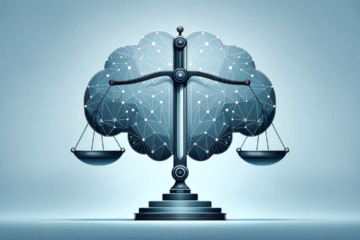
This article is written by Burdith Ann Pereira of 3rd Semester of the University of Law College, Gauhati University, Guwahati, an intern under Legal Vidhiya.
ABSTRACT
This article aims to throw light on the amendments of the constitution and why it was introduced. The makers of the constitution knew that the society was subjected to changes and as a result of that they made provisions to cater to the changing needs of the society.
Keywords: Constitution of India, Amendments, Basic Structure Doctrine, Fundamental Rights, Indian, Judiciary
INTRODUCTION
The Constitution of India, adopted on January 26, 1950, is the supreme law of the land and the cornerstone of the world’s largest democracy. Crafted over several years, the Indian Constitution serves as a comprehensive legal document outlining the country’s fundamental principles, structure of government, and the rights and duties of its citizens. Throughout its history, the Constitution has been amended to adapt to changing circumstances and address emerging issues. In this article, we will delve into the Constitution of India, its historical context, key features, and the process of its amendment.
Historical Context
The drafting of the Indian Constitution was a monumental task undertaken by the Constituent Assembly of India, which was established in 1946. This assembly was composed of representatives from diverse backgrounds and regions, including prominent leaders like Dr. B.R. Ambedkar, Jawaharlal Nehru, and Sardar Vallabhbhai Patel. The primary objective was to create a democratic framework that would ensure justice, liberty, equality, and fraternity for all Indian citizens.
Key Features of the Indian Constitution
1. Preamble: The Preamble of the Indian Constitution sets out the guiding principles and aspirations of the nation. It emphasizes justice, liberty, equality, and fraternity as essential values that underpin Indian society.
2. Federal Structure: India has a federal system of government, where power is divided between the central government and individual states. The Constitution delineates the powers and responsibilities of both levels of government.
3. Fundamental Rights: Part III of the Constitution enumerates fundamental rights, which include the right to equality, freedom of speech and expression, and the right to life and personal liberty. These rights are enforceable by the courts and serve as a bulwark against government overreach.
4. Directive Principles of State Policy: Part IV of the Constitution lays down directive principles that guide the government in policy-making. While not legally enforceable, these principles provide a road map for creating a just and equitable society.
5. Fundamental Duties: In 1976, the Constitution was amended to include a list of fundamental duties for citizens. These duties emphasize the importance of respecting the Constitution, promoting harmony, and safeguarding public property.
6. Separation of Powers: The Constitution divides powers among the executive, legislative, and judicial branches of government, ensuring a system of checks and balances.
7. Independent Judiciary: The judiciary, headed by the Supreme Court, acts as the guardian of the Constitution. It has the authority to review laws and government actions for their constitutionality.
Amendment Process
The framers of the Indian Constitution recognized the need for adaptability and change over time. Hence, they included provisions for amending the Constitution. The amendment process is outlined in Article 368 of the Constitution. Notably, the Indian Constitution has been amended numerous times to address various issues, including political, social, and economic concerns.
The basic steps for amending the Constitution are as follows:
1. Introduction: An amendment can be proposed in either house of Parliament (Lok Sabha or Rajya Sabha) by a member. Alternatively, it can be initiated by the President.
2. Passage: The amendment must be passed by a two-thirds majority in each house of Parliament. If initiated by the President, it must also be passed by a two-thirds majority in both houses.
3. Presidential Assent: After passing both houses, the amendment is sent to the President for assent. The President can either give their assent or withhold it.
4. Ratification: In some cases, constitutional amendments require ratification by a majority of state legislatures. This is typically necessary for amendments affecting the federal structure or the representation of states in Parliament.
5. Incorporation: Once ratified and assented, the amendment becomes part of the Constitution.
Significant Amendments
Over the years, several amendments have shaped the Indian Constitution. Some of the most notable ones include:
1. First Amendment (1951): This amendment added reasonable restrictions to freedom of speech and expression to protect public order, decency, and morality. It also introduced the concept of “reasonable classification” for the application of laws. Shankari Prasad v. Union of India (1951) was the first case to uphold the validity of the First Constitutional Amendment Act of 1951, ruling that Parliament had the authority to amend the Constitution, including Fundamental Rights, without limitations. This case established the principle that there were no inherent restrictions on Parliament’s amending power under Article 368 of the Indian Constitution. Shankari Prasad Singh Deo, the Rajpramukh (Governor) of the state of Orissa, challenged the constitutionality of the First Constitutional Amendment Act of 1951, which inserted Article 31-A and Article 31-B into the Indian Constitution. These amendments sought to provide protection to certain land reform laws by placing them in the Ninth Schedule, making them immune from judicial review. The Supreme Court, in a unanimous decision, ruled in favor of the Union of India, upholding the validity of the First Constitutional Amendment Act. The court held that Parliament possessed the authority to amend any part of the Constitution, including Fundamental Rights, without any inherent limitations. This decision established the principle that there were no inherent restrictions on Parliament’s amending power under Article 368.
2. Seventh Amendment (1956): It reorganized states on a linguistic basis, leading to the creation of new states and union territories.
3. Twenty-Fourth Amendment (1971): It curtailed the scope of judicial review by limiting Parliament’s power to amend the Constitution in certain areas.
4. Forty-Second Amendment (1976): Minerva Mills Ltd. v. Union of India (1980) case reviewed the 42nd Amendment Act, which had curtailed the power of judicial review. The court struck down certain provisions of the amendment and reinforced the significance of the “Basic Structure Doctrine.” Often referred to as the “Mini Constitution,” this amendment made significant changes, including the insertion of the term “Secular” in the Preamble, the Fundamental Duties, and limitations on the judiciary’s power. The Supreme Court, in its judgment, struck down several provisions of the 42nd Amendment Act, including those that restricted the power of judicial review. The court held that Parliament’s amending power under Article 368 did not extend to altering or damaging the basic structure of the Constitution. This decision reaffirmed the significance of the “basic structure” doctrine, which had been introduced in the Kesavananda Bharati case, and emphasized the Court’s role in safeguarding the core principles of the Indian Constitution. The Waman Rao v. Union of India (1981) case upheld the validity of the 42nd Amendment’s Ninth Schedule, which had immunized laws placed within it from judicial review. This case dealt with the constitutional validity of the Ninth Schedule and its scope regarding judicial review. The Ninth Schedule was created to protect certain laws from judicial scrutiny, shielding them from challenges on the grounds of violating fundamental rights. In this case, the Supreme Court held that laws placed in the Ninth Schedule were not immune from judicial review if they violated fundamental rights. The court established the principle that any law, irrespective of its inclusion in the Ninth Schedule, could be subject to judicial scrutiny if it infringed upon fundamental rights. This judgment reaffirmed the supremacy of fundamental rights and the role of the judiciary in protecting them, even in the face of laws shielded by the Ninth Schedule.
5. Ninety-Third Amendment (2005): This amendment introduced the concept of “reservation in private educational institutions” to ensure socially and educationally backward classes’ access to higher education.
6. One Hundred and First Amendment (2016): It introduced the Goods and Services Tax (GST), a significant tax reform that replaced a complex system of indirect taxes with a unified tax structure.
Challenges and Controversies
While the amendment process is a vital aspect of the Indian Constitution’s flexibility, it has also been a subject of debate and controversy. Some critics argue that frequent amendments can dilute the Constitution’s core principles and make it susceptible to political manipulation.
Additionally, certain amendments have faced legal challenges in the courts. The judiciary plays a crucial role in upholding the Constitution’s basic structure, ensuring that amendments do not undermine its fundamental principles. The Indian Supreme Court’s landmark decision in the Kesavananda Bharati case (1973) established the “Basic Structure Doctrine,” asserting that while Parliament has the power to amend them. The Constitution, it cannot alter its essential features, such as democracy, secularism, and the rule of law. In this case, Kesavananda Bharati, a spiritual leader and head of the Edneer Mutt in Kerala, challenged the Kerala Land Reforms (Amendment) Act, 1969, and several other constitutional amendments that sought to curtail the power of the judiciary and expand Parliament’s amending authority. In a historic verdict, the Supreme Court, in a 7-6 majority decision, ruled that while Parliament had the authority to amend the Constitution, it could not alter its “basic structure.” The court did not provide an exhaustive list of what constituted the “basic structure” but indicated that it included fundamental features like democracy, secularism, the rule of law, and the independence of the judiciary. Golaknath v. State of Punjab (1967) another landmark case challenged the validity of the 1st, 4th, and 17th Constitutional Amendments, which imposed restrictions on property rights. In Punjab, there was a family consisting of Henry and William Golaknath who owned a total of 500 acres of farmland. However, in 1953, the Punjab government enacted the Punjab Security and Land Tenures Act. According to this Act, an individual could only possess a maximum of 30 Standard acres (or 60 ordinary acres) of land. Consequently, the Golaknath family was required to relinquish the surplus land, retaining only 30 acres (with a few acres designated for tenants). In response, the Golaknath family decided to take their case to court, questioning the legality of the 1953 Act. In a significant and far-reaching decision, the Supreme Court, in a 6-5 majority, ruled that Parliament did not have the authority to amend the Fundamental Rights provisions of the Constitution. The court held that amending Fundamental Rights would constitute a “basic structure” alteration, which was beyond the amending power of Parliament under Article 368.
Case Laws:
- Shankari Prasad v. Union of India (1951)
- Minerva Mills Ltd. v. Union of India (1980)
- Waman Rao v. Union of India (1981)
- Kesavananda Bharati case (1973)
- Golaknath v. State of Punjab (1967)
Conclusion
The Constitution of India is a living document that has evolved over time to meet the changing needs and aspirations of its citizens. It embodies the democratic ideals of justice, liberty, equality, and fraternity. The amendment process, as outlined in Article 368, has allowed India to adapt to new challenges and societal changes while upholding the Constitution’s core values.
Despite the challenges and controversies surrounding constitutional amendments, India’s judiciary has played a crucial role in safeguarding the Constitution’s basic structure and ensuring that amendments do not undermine its fundamental principles. The Indian Constitution remains a beacon of democracy and a testament to the wisdom of its framers in creating a framework for a diverse and dynamic nation.
As India continues to grow and evolve, the Constitution will undoubtedly face new challenges and require further amendments to address emerging issues. However, the principles enshrined in the Preamble and the Constitution’s enduring commitment to justice, liberty, equality, and fraternity will continue to guide the nation’s path toward a brighter future. The Constitution of India stands as a testament to the nation’s commitment to democratic values and the rule of law, and its ability to adapt to the changing needs of a diverse and dynamic society. It is a living document that continues to shape the destiny of a nation, ensuring that the principles of justice, liberty, equality, and fraternity remain at the forefront of India’s journey into the future.
REFERENCES
- https://legalcharcha.com/academics/constitutional-law/
- https://books.google.co.in/books?id=9PTREAAAQBAJ&redir_esc=y
- https://khabaraabtak.in/list-of-indian-presidents/




0 Comments